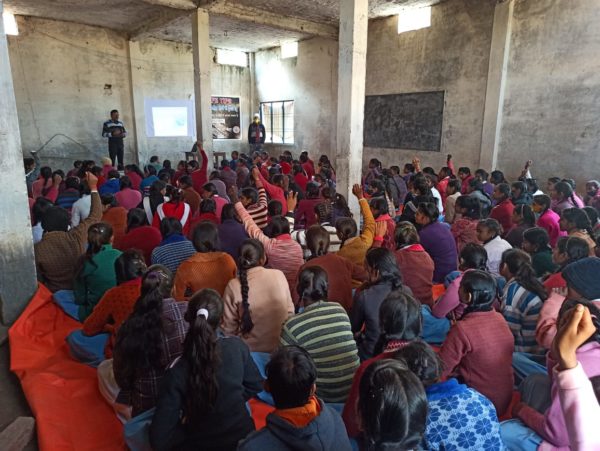They’re young. They’re eager. They’re energetic. And they’re the future of the anti-slavery movement. Across America, college students are studying strategies for action in the global fight to eradicate human trafficking.
I had the honor to speak to some of these students this month at Harvard University and Oberlin College. My theme: “communications as activism.”
One of the first challenges for any human rights campaign is raising awareness that a problem exists. Free the Slaves has been at the forefront of a global awakening about the persistence of human trafficking. Our films, books and TED Talks (here & here) have reached millions of people, and our organization has been covered by news outlets that reach hundreds of millions more. Early on, before social media existed, we relied heavily on the news media to spread the word. News coverage conveys credibility, and news outlets can reach people that we might not connect with on our own.
But I noted for students that the anti-slavery movement is in the midst of a major communications transformation. Awareness that slavery exists is now widespread in the U.S. What people aren’t so sure about is whether slavery can be conquered. This messaging challenge, moving from problem to solution, requires organizations like Free the Slaves to demonstrate the strategies behind our work, and the impact it creates for individuals, families and communities. This is still a work in progress.
I helped students understand the three phases of the Free the Slaves story, and how communications is playing an essential role. First, we sounded the global alarm. Early news coverage focused largely on shock, anger and empathy. Next, we designed a blueprint for worldwide change. We focused on optimism and showing how everybody has a role to play. Now, we’re on the cusp of the 21st century’s Great Emancipation. We’re focusing on freeing entire communities by ending the social, political and economic vulnerabilities that make people easy prey for traffickers.
The students asked remarkably insightful questions, such as how we explain the differences between trafficking and slavery (see our FAQs), how we ensure that photos don’t cause harm to slavery victims (we only film people with their permission and have strict protocols), and how as activists we navigate the news media’s desire for objective information (we build credibility by meticulously documenting our methods and impact).
Of course, awareness alone never solved anything. But it’s impossible to solve a problem like modern slavery without it. Early abolitionists raised awareness about the brutality and immorality of slavery to get it outlawed more than a century ago. Today, we’re continuing to raise awareness that slavery still exists, but can be overcome, in our work to finish the job of eradication and ensure that slavery truly becomes a thing of the past.
My thanks to FTS Board Vice-Chair Dr. Timothy McCarthy for inviting me to speak to his graduate students at the Carr Center for Human Rights Policy at Harvard’s Kennedy School, and to the Project Unbound student group at Oberlin College!
See ideas for taking action on your college campus on our Students Ending Slavery webpage.

